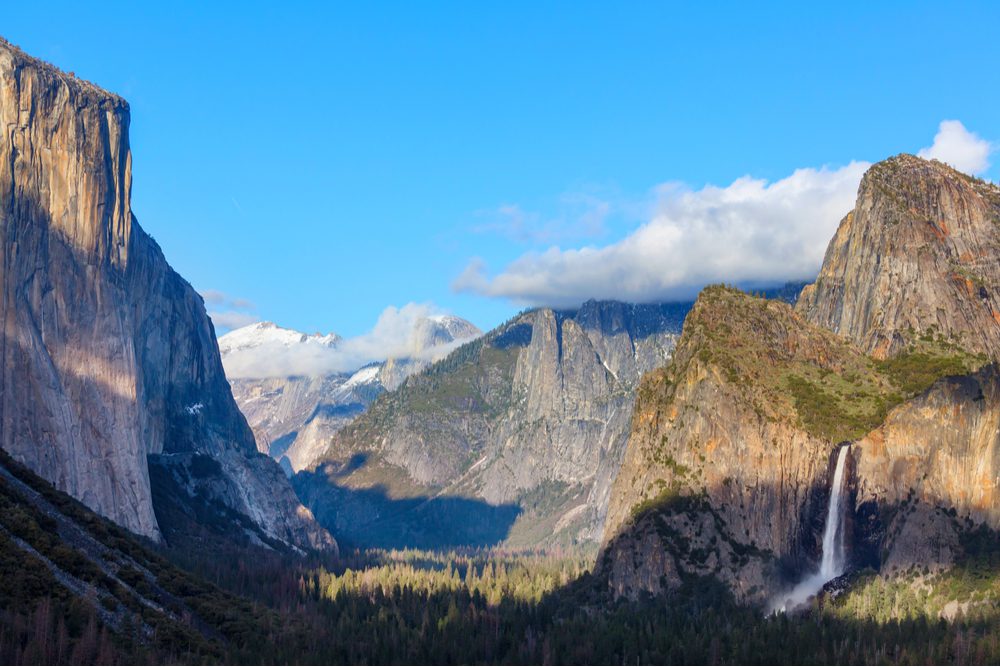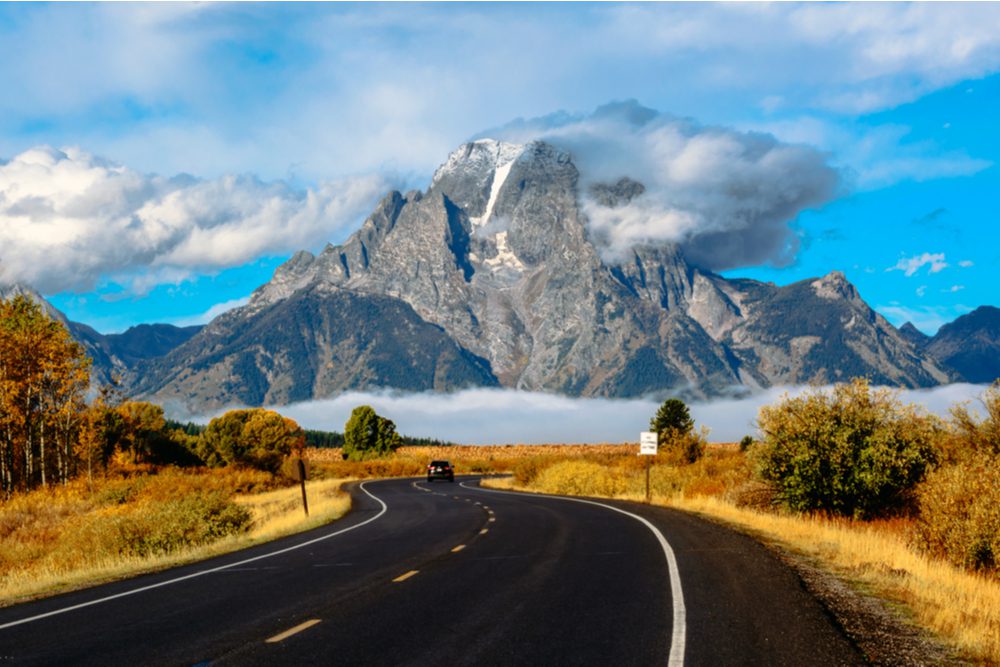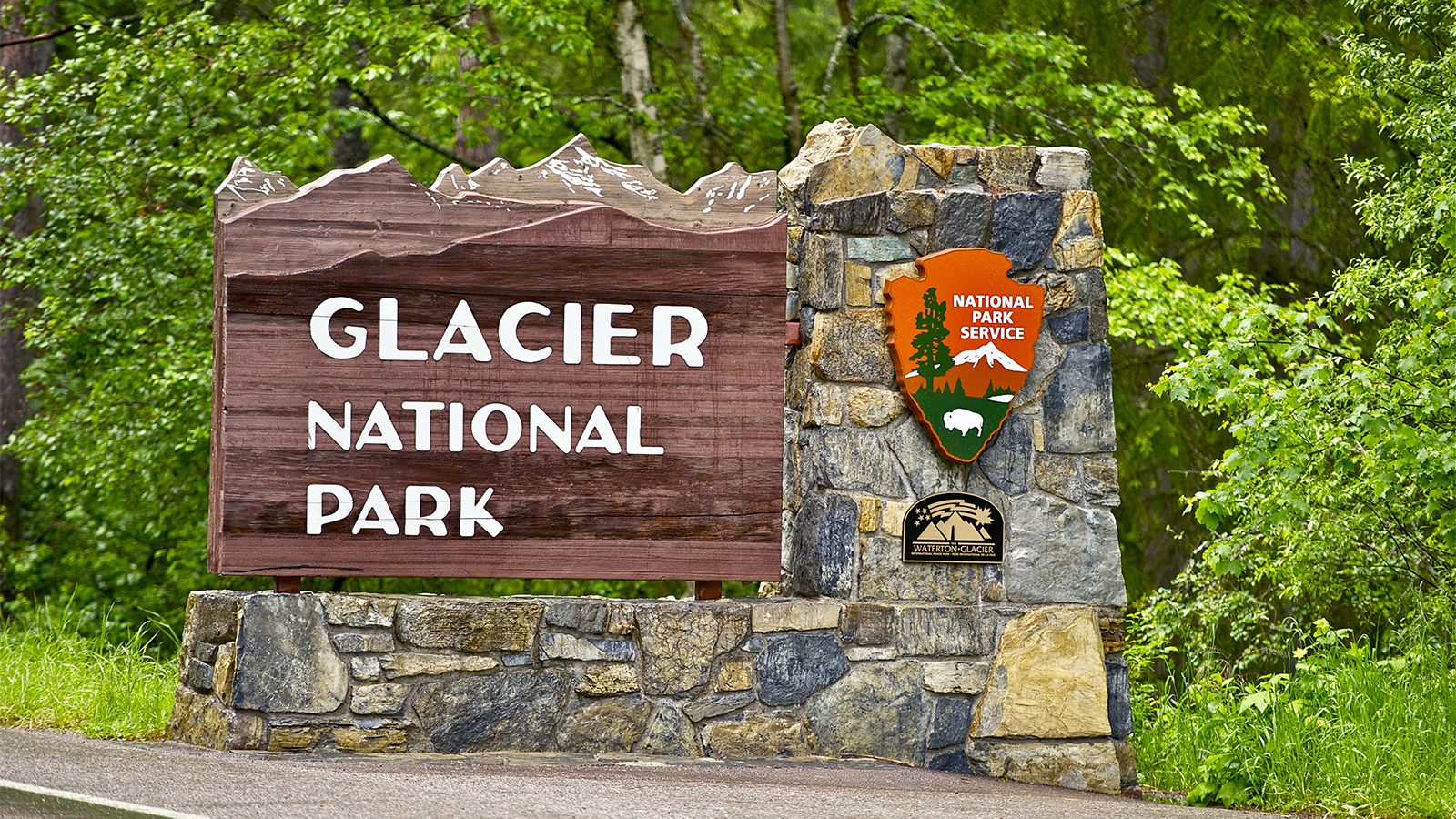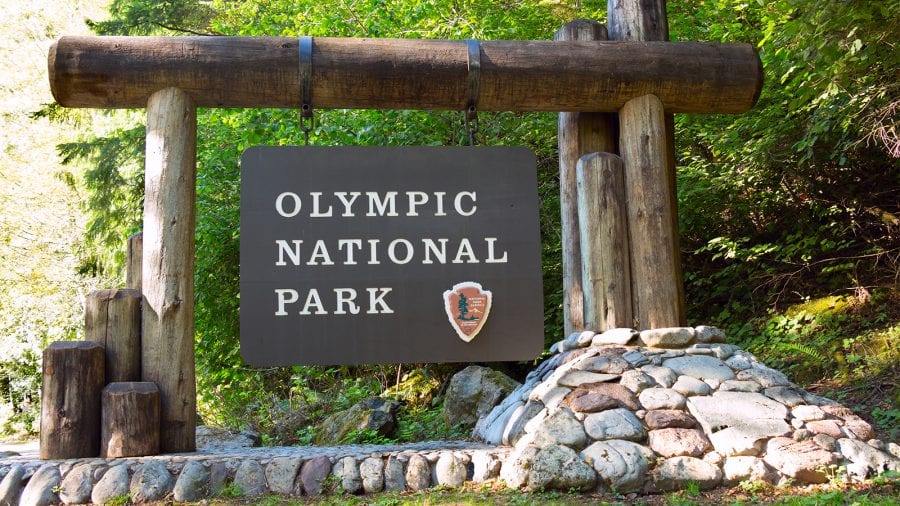
Here are some quick facts about Olympic National Park.
- Established : June 29, 1938
- Land Size : 1,442 square miles
- Annual Visitors : 3.25 million
- State : Washington
- Entrance Fees : $30 per vehicle; $25 per motorcycle; $15 per pedestrian
Page Contents
Where is Olympic National Park?
Olympic National Park is located on the Washington Peninsula. It takes up a vast majority of this landmass and is located just across Canada’s Salish Sea. At its narrowest point, it is only 15 miles wide between the two.
Olympic National Park is quite close to several major metropolitan areas in the Upper NorthWest, making it quite accessible for this part of the country. From Olympia, it is only slightly over an hour away, or 51.5 miles.
From Seattle, it is just over two hours away, or 110 miles. From Vancouver, it is 2 hours and 24 minutes away.
What is Olympic National Park famous for?
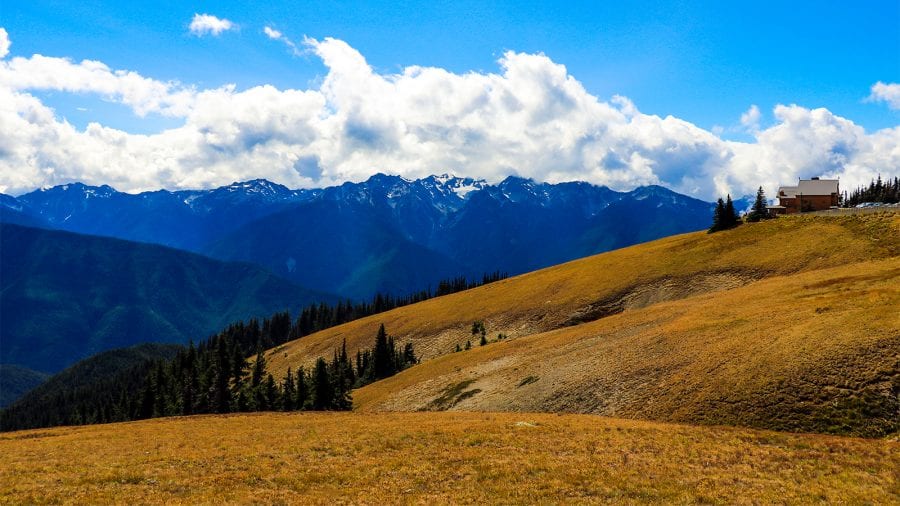
Olympic National Park is one of the few globally, not to mention the country that encompasses both mountainous areas and butt up next to the ocean. From beaches to panoramic views, you can take it all in at this National Park.
The National Park was originally established to protect and preserve some of the only primeval forests in the U.S. located in Washington. They were quickly disappearing, and action needed to be taken to inhibit logging and deforestation on the peninsula.
The movement was successful since now the park is home to one of the most significant lasting sections of old-growth forest and temperate rainforest in the lower 48 states.
What is the best month to visit Olympic National Park?
The best month to visit Olympic National Park is in July.
The National Park tends to get heavy snows during the winter, which is longer the higher up in elevation you rise.
People who want to experience the best weather and get the most out of their visit to the park should go in the summertime. That means visiting the park from July through August. The temperatures are at their best during this time and allow you to get through any area you want to visit without snow blocking the way.
Unfortunately, this park is one of the more popular ones in America and receives millions of visitors each year. Since it is well-known for great skiing, even the winter months at the park can be quite populated.
What to do in Olympic National Park?
How many days do I need in Olympic National Park?
2 days (short trip)
Two days in Olympic National Park is going to feel very busy if you want to experience as much of the park as possible. However, it is doable if you are willing to put in some driving shifts. Starting from Seattle, drive up to Hurricane Ridge, which is about 3 ½ hours away.
The Ridge is one of the famed overlooks of the park. Lace-up your hiking boots. You can take several hiking trails that veer away from the visitor center, such as High Ridge Trail to Sunrise Point. Explore the visitor center to pick up souvenirs and maps. Port Angeles is not far from here and sports some excellent hotels or B&Bs for the night.
On the second day, get up early to make the drive to Lake Crescent. Drive along this beautiful lake to catch some more mountain views. You can stop along the way for a hike or pick up breakfast at the Lodge overlooking the lake’s mountain-fed waters.
Drive on from here to reach the Hoh Rainforest, one of the largest temperate rainforests in the lower 48 states. If you continue from here for about an hour, you will get to the coastline and explore Ruby Beach as the sun sets over the ocean.
6 days (long trip)
On Day 1 of your week-long trip to the Olympic Peninsula, you can head to Hurricane Ridge. Take the time to hike along the ridge and take in some of the sights from the trails. Explore the visitor center as well and get your bearings for the remainder of the week.
Day 2, drive from Hurricane Ridge to Lake Crescent. Pack a cooler for a picnic and hike around part of the lake to find some seclusion overlooking the glacial waters. Continue from here on Highway 101 and hit the Salmon Cascades and Ancient Grove trail.
Day 3 and 4 is a day for the beaches. Head towards Forks to get a load of the town that inspired Twilight. Grab some lunch and take time to geek out before heading to the beaches, Mora, La Push, and Rialto. You can camp close to these areas.
Day 5 takes you to Hoh Rainforest. There are many hikes to do in this area and a visitor center to get your bearings.
Finally, day 6 finds you back at the beaches. This time you are visiting some of the more famous locations of the park. Spend plenty of time on Ruby beach Kalaloch beach and head back around to Lake Quinault before driving back to Seattle.
How to get to Olympic National Park?
Flights
- Sea-Tac International Airport (SEA). This airport is the largest airport that serves the majority of the Seattle metropolitan area within Washington state. It is primarily commercial and is often one of the best ways to get into the NorthWest from international or far away domestic locations.
- Victoria International Airport (YYJ). The Canadian side is just as common as coming through America since the National Park borders the country so closely. This airport is the 9th busiest in Canada and is located only slightly over the border in Victoria. It consistently offers non-stop service to Vancouver if you want to come up to the National Park instead of heading down.
Drive
- From Olympia, use Interstate 5 to reach Highway 101. Highway 101 connects you to the Olympic Peninsula and is the road that allows you to reach your destinations throughout the park.
- From Tacoma, you can use State Route 16. Once you reach Bremerton, use Route 3 N to Route 104 to get to the park.
- If you are driving along the coastline to get to the park, connect to Highway 101 in Aberdeen to enter into the Peninsula.
Public transport
- Olympic Bus Lines. If you do not have the means of traveling by car, you can use the Olympic Bus Lines to get there. They serve the Greater Puget Sound area and allow you transport from the Sea-Tac Airport to the surrounding area and into the park. You will want to use the Dungeness Bus Line specifically.
- Clallam Transit System. Another bus line that runs in the area is the Clallam Transit System. They take you throughout Clallam Country and also service towns sprinkled throughout the park. These include Port Angeles, Forks, and Sequim. They also stop at popular destinations within Olympic National Park.
- Washington State Ferries. The Washington State Ferries offer a unique way to get to the Park. They allow you access from Puget Sound and bring you to the edge of the park. You can use the Coho Ferry if you are coming from Victoria, BC, instead of the American side.
What to see in Olympic National Park?
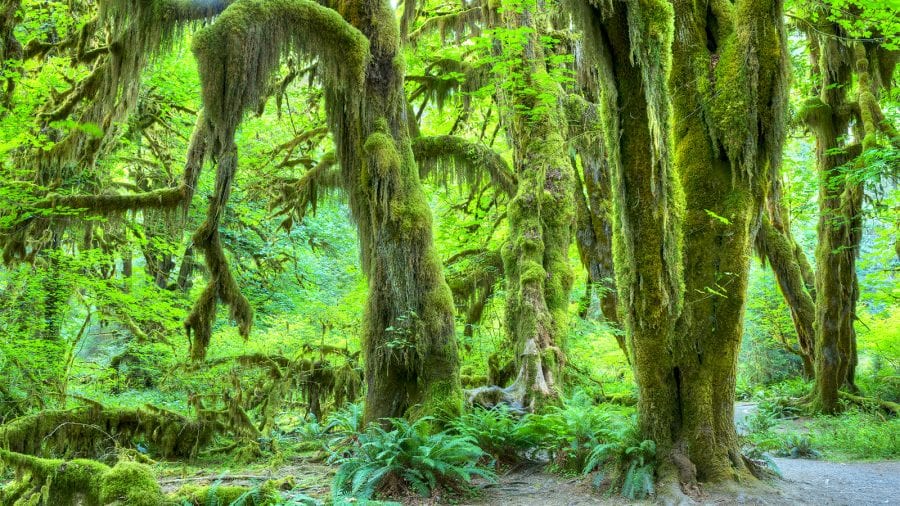
Hoh Rainforest
This rainforest is one of the biggest temperate rainforests within the lower 48 states. It is the original reason for the preservation of the park system on the peninsula. As one could guess, the Hoh Rainforest receives more rain than any other forested area in the U.S., with 150 inches each year. It is always an excellent plan to have rain gear with you.
Ruby Beach
Ruby Beach is just south of the town of Forks. It gets a tremendous amount of driftwood that floats up to the beach and stacks there. It is called Ruby Beach for the ruby-like crystals that form in the beach’s sand. Some of the most exciting things to do here include exploring tidal pools and whale watching in April during their migration.
Lake Crescent
Lake Crescent is one of the most viewed areas in the park. It is an entirely enclosed area within Clallam County. It was closed off from other water sources in the park by a sizeable geological landslide centuries before and is now the most extensive and deepest glacial lake in the area.
Sol Duc Hot Springs
Sol Duc Hot Springs is entirely encapsulated by the Resort set over it. This resort also contains a freshwater pool to cool yourself off during the summer months when the hot springs get too warm. It receives its water from the spring water from rain and snow that melts through the sedimentary rocks. Here, it is heated by gasses coming from volcanic rocks that are cooling under the surface.
Hurricane Ridge
Olympic National Park encompasses an area of mountains as well as beaches. Hurricane Ridge gives visitors the chance to interact with these mountains, take in stunning views, and ski or snowboard during the winter months. It is also among the most popular areas in the park.
Amanda Williams
Amanda Williams is a writer, plant-nerd, and outdoor enthusiast. She has traveled extensively, around the U.S., throughout Asia, Europe, and Latin America. Everywhere she treks, she takes time to enjoy the outdoors. John Muir is her hero. She aspires to inspire people to live better as he did.
